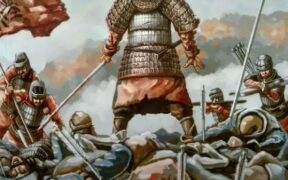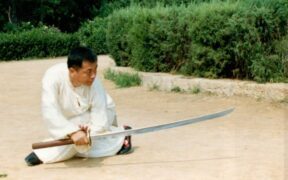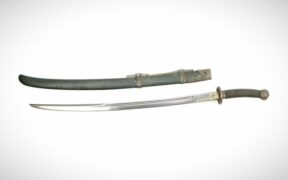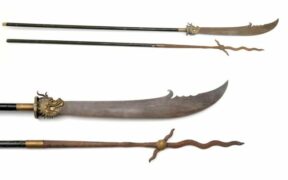Our content features commercial links to our products, committed to transparent, unbiased, and informed editorial recommendations. Learn More
Chinese Dadao Features & Significance in History
NO AI USED This Article has been written and edited by our team with no help of the AI
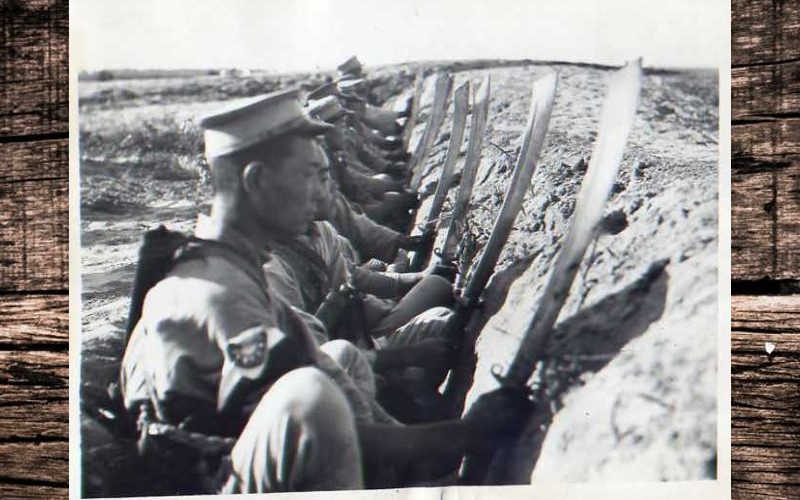
The Chinese dadao is a variety of the Chinese saber with a large, cleaver-shaped blade. Before the appearance of firearms, Chinese forces used them to inspire fear in opponents during battle. Since it is similar to a machete, it is called the big knife or the great saber.
This article explores the unique characteristics of the dadao, its significance in Chinese history, and what makes it a great sword.
Characteristics of the Dadao Sword
There were many variants of the dadao throughout Chinese history, but the most renowned is the Republican dadao of the post-Qing armies.
Here are the dadao’s unique characteristics and the importance of its design:
Type of Metal
The dadao swords have thick and broad blades that are durable even without a complex forging process like Japanese samurai swords. Therefore, bladesmiths did not rely on high quality steel for it.
Today, a variety of blade materials are accessible. One of the best options available is a high carbon steel blade. Some modern versions also have damascus steel blades with wavy light and dark patterns on the metal.
Blade Quality
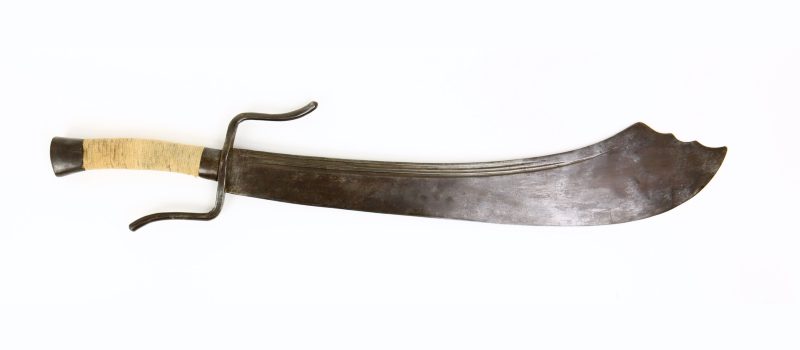
The dadao sword has a wide but flat blade. This results in a thin cutting edge for slashing yet heavy enough for good cutting power.
A typical Republican dadao has a broad blade, thickest at the hilt and thins out as it gets wider. The blade flares out towards a clipped tip, giving the sword its characteristic shape. However, some blades even feature a wide clipped tip and a notched upper edge.
Design
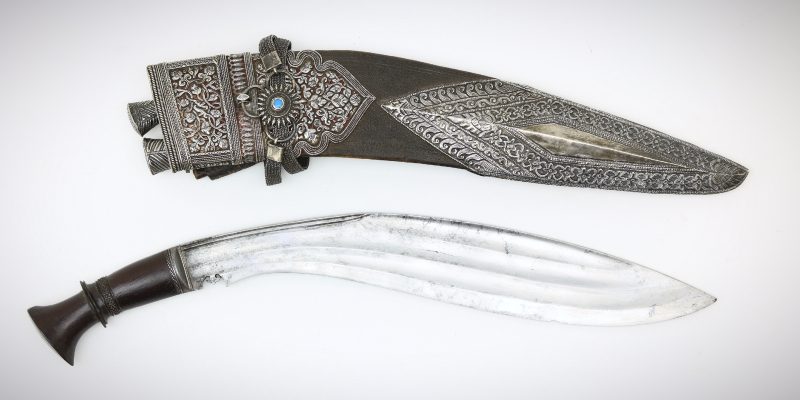
The Chinese dadao’s design is similar to that of the Nepalese kukri. While it may not be sophisticated, it is a highly effective close combat weapon for slashing and chopping. Due to its bulk and weight, Chinese soldiers have it slung across their backs.
Length and Weight
Despite its size and weight, the dadao is generally well balanced.
- Overall length: 30.7 – 37 inches (78 – 94 cm)
- Blade length: 19.7 – 27.6 inches (50 – 70 cm)
- Blade tip: 3.0 inches (7 cm) along a slant
- Weight: 1.0 – 3.5 lbs (0.45 – 1.59 kg) depending on the material
For instance, a Republican dadao with a blade length of 50 centimeters may have a point of balance around 13 centimeters from the guard. On the other hand, a variety with a blade length of 60 centimeters may have a balance point around 18 centimeters from the hilt side.
Sword Mounting

Battle-ready Chinese dadao swords generally have full tang blades. Unlike the disk-shaped tsuba of the Japanese sword, the dadao often features ram’s horn quillons or even an S-shaped guard.
A Republican dadao usually features a pommel ring. Rather than wooden scabbards, modern-day dadao often comes with a leather sheath.
Dadao Sword Uses
In Chinese martial arts or kung fu, practitioners often use the tai chi sword or jian and the taiji dao in training. However, some also use the dadao by applying Chinese long saber techniques in solo practice forms.
Dadao Significance in Chinese History
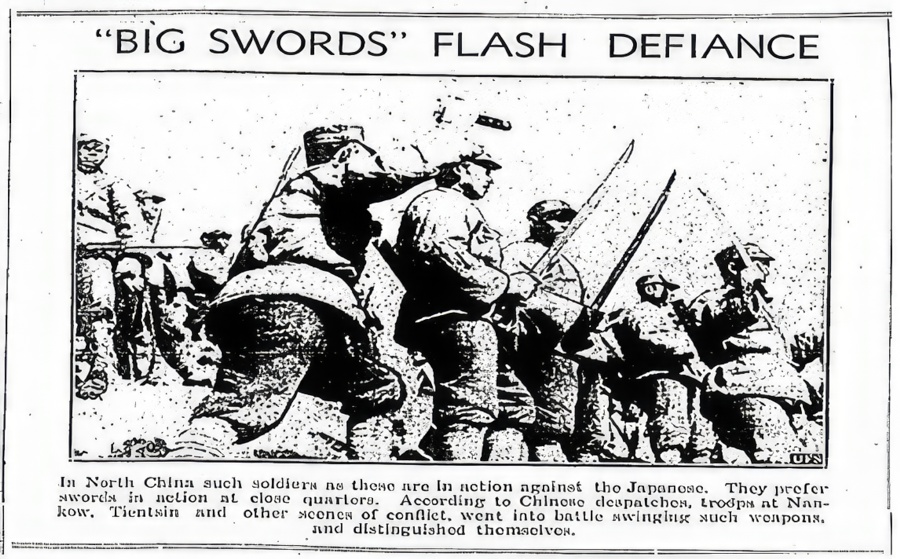
The dadao is a special symbol of Chinese resistance for the following reasons:
Several statements including those published by the National Arts Weekly Magazine (Guo Shu Zhou Kan) in 1934 describes the importance of the dadao during Shanghai’s January 28th, 1932 Incident (Yi Erba Song Hu) where Chinese soldiers used the weapon in close combat against the Japanese troops.
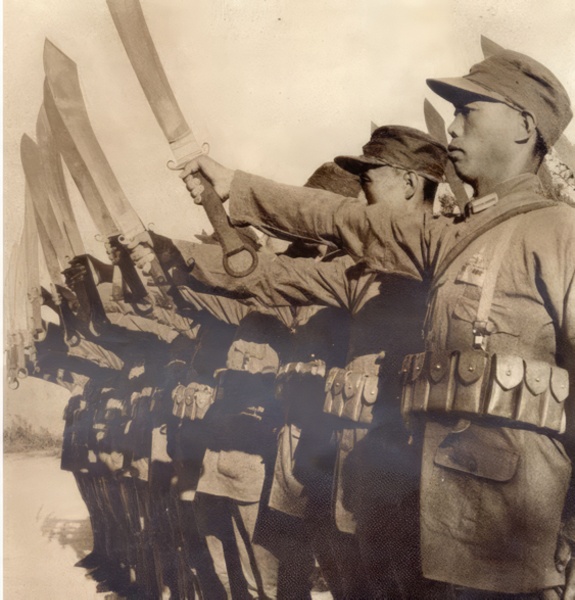
On July 7th, 1937, Chinese forces clashed with the Japanese Army at the Marco Polo Bridge. Colonel Ji XingWen and his 29th Route Army wielded their dadao, modern rifles, and grenades and secured victory. For this reason, dadao swords from the 29th Route Army are very popular among collectors.
History of the Chinese Dadao Sword
We mostly recognize the dadao of the 20th century, but its general shape has earlier origins. Here is how it has evolved:
Song Dynasty (960 – 1279)
During this time, many types of dao swords were used. The pu dao or shuang shou dao was a favorite among foot soldiers.
There is much debate on what the early pu dao looked like. However, it is agreed that the pu dao‘s blade is similar to the dadao‘s, except for its longer handle.
Ming Dynasty (1368 – 1644)
As martial arts became refined, variations in the dao’s shape continued. The term “dadao” was used to refer to various large bladed weapons on polearms such as the zhanmadao, kuanren dadao, guandao, and more.
The 14th-century historical novel Romance of the Three Kingdoms mentioned the kandao, which means chopping saber or chopping knife. Even though we do not know what it looked like, the term kandao is likely an alternative name for the dadao.
Qing Dynasty (1644 – 1911)
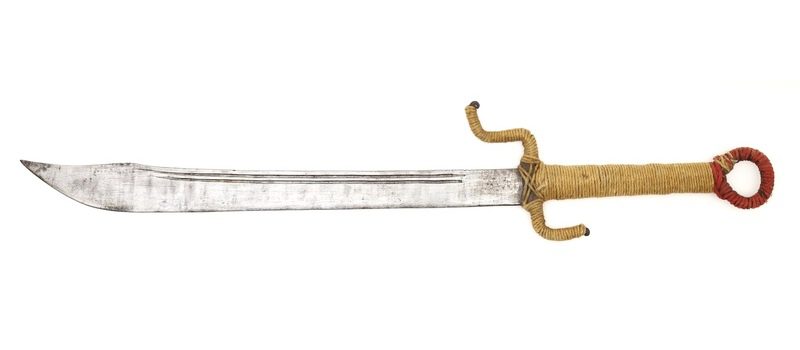
By this time, the Chinese military had many kinds of dao swords of different lengths. Most blades were straight and featured a widened tip section, as well as S-shaped quillons.
Some 19th-century civilian dadao featured inscriptions, suggesting that a local military unit used them to protect their town.
Republican Period (1912 – 1949)
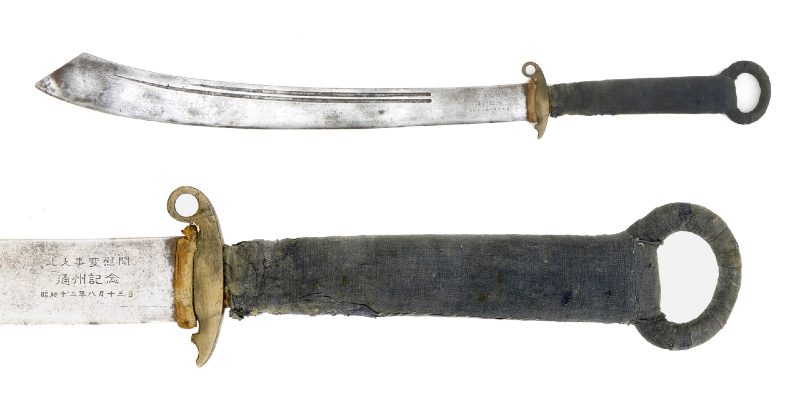
The Republican Period marks the end of the Qing Dynasty and the establishment of the People’s Republic of China. During this time, the dadao played a significant role in many of the events.
Warlord Period (1916 – 1929)
Warlords rose to power during the 1911 Revolution, ending China’s last imperial dynasty. Some of these warlords were highly trained officers with a personal army where soldiers wielded the dadao in battles.
Marco Polo Bridge Incident (July 7th, 1937)
As mentioned above, Chinese forces clashed with the Imperial Japanese Army at the Marco Polo Bridge near Beijing. Colonel Ji Xingwen and the 29th Route Army’s victory made the dadao a symbol of Chinese resistance.
In 1933, Yin Yuzhang described the sword as a kandao or cleaving saber in his saber techniques manual.
Sino-Japanese War and World War II
The Marco Polo Bridge Incident even started the second Sino-Japanese war, from 1937 to 1945, when China began a full-scale resistance against the territorial expansion of Japan.
The Sino-Japanese war contributed to the course of events in World War II, as China held down many Japanese troops on its territory.
